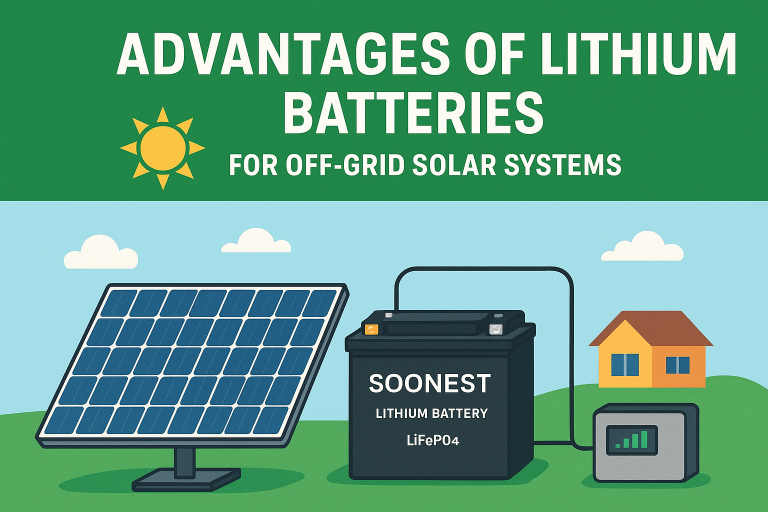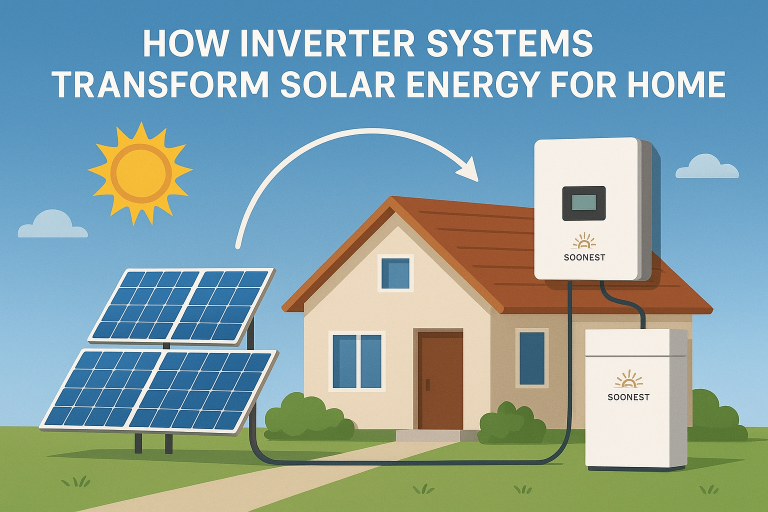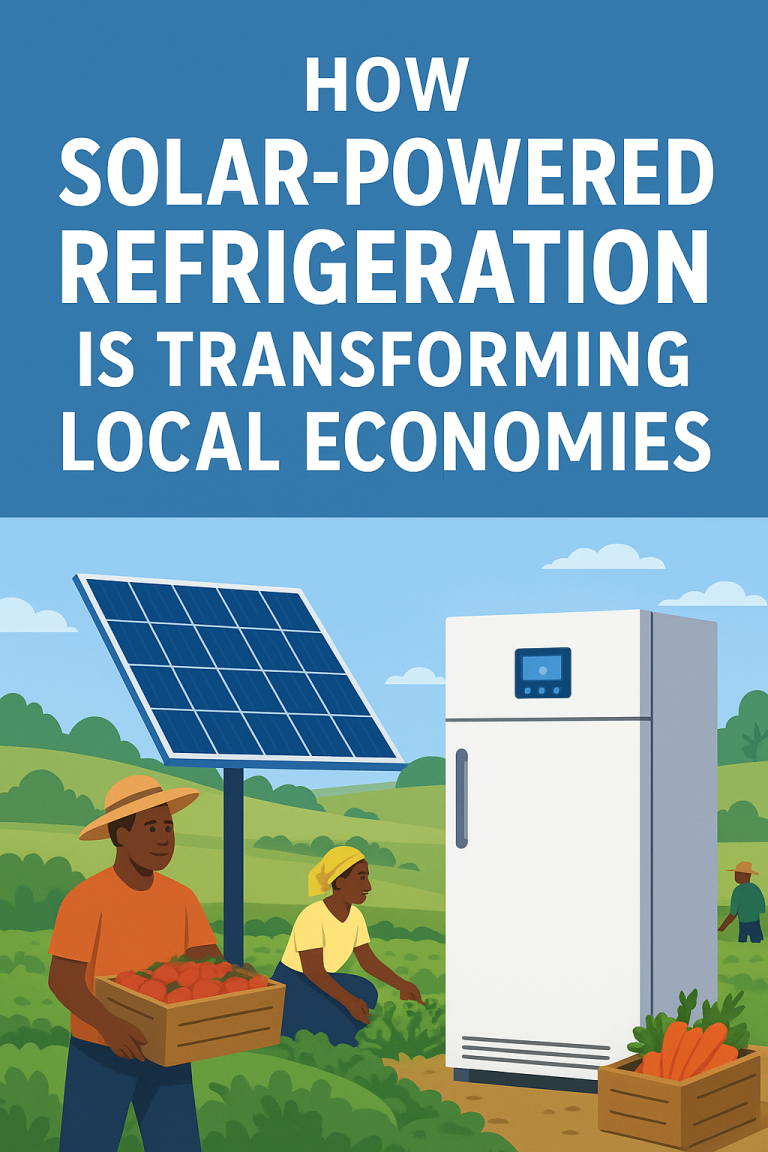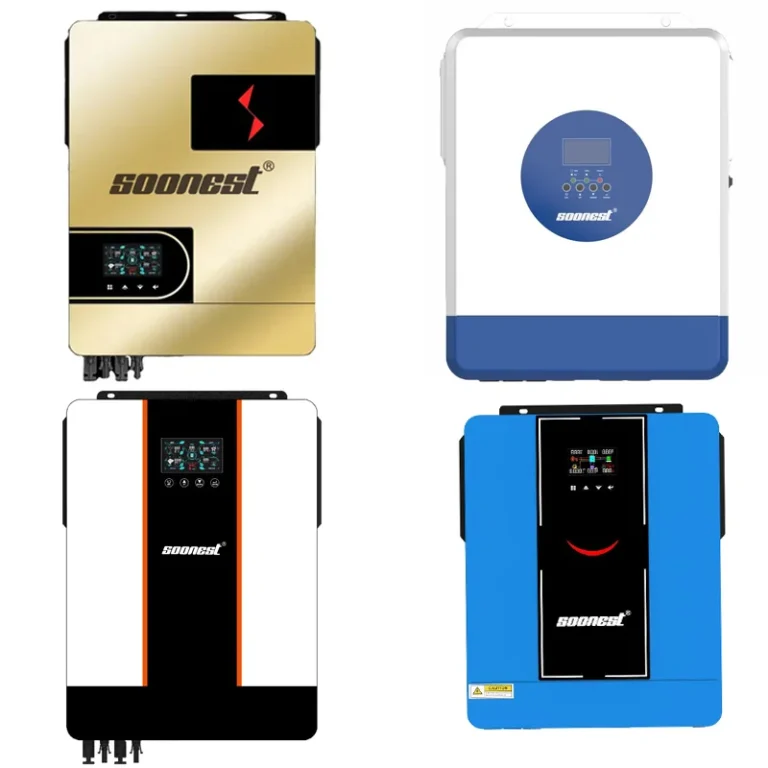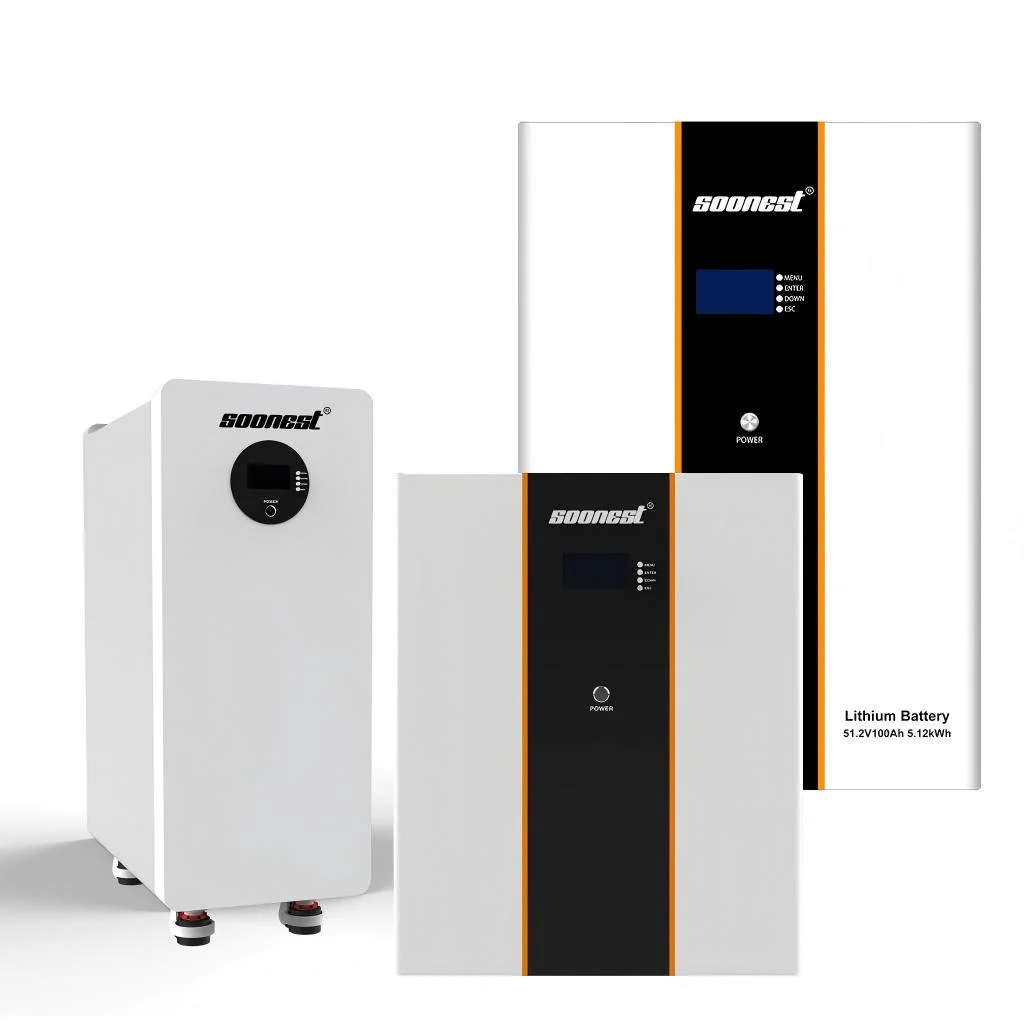
Если вы живете там, где зимы суровые и рассчитываете на солнечную энергию, выбирайте правильно Солнечная батарея Холодная погода – это большая проблема. Не все батареи могут выдержать холод. Плохой выбор может быстро износиться, плохо работать или навсегда повреждаться. Это руководство покажет вам, что влияет на то, как батареи справляются с холодной погодой. Это также поможет вам найти лучший для ваших потребностей.
Для тех, кто ищет надежные, высококачественные батареи, изготовленные для возобновляемых источников энергии, в том числе в холодном климате, проверьте Скоройший состав Солнечные литиевые и гелевые батареи. Их продукты обеспечивают беспрепятственную работу домов, телекоммуникационных башен, RV и многого другого. Независимо от того, нужен ли вам легкий литий или жесткий гель, Скорее всего предоставляет гибкие решения с помощью умной инженерии.
Что влияет на то, как работают батареи в холодную погоду?
Холодная погода мешает батареям во многих отношениях. Это может замедлить их внутреннюю работу или сократить их выходную мощность. Как определить батарею, которая хороша для зимы?
Почему так важно справляться с холодными температурами?
Способность батареи работать при определенных температурах определяет, насколько хорошо она работает, когда она ледена. В очень холодную погоду сопротивление батареи внутри увеличивается. Химические реакции также становятся медленными. Это делает батарею удерживать меньше энергии и работать менее хорошо.
Гелевые батареи хорошо управляют теплом. Они могут справляться с широким диапазоном температур, поэтому они довольно прочны в холодных местах. Но батареи с литиевым железным фосфатом (LiFePO4) часто работают еще лучше. Их химия остается стабильной, даже когда она замерзает.
Как зарядка проходит в холодную погоду?
Зарядка батареи ниже 0 ° C может быть опасной, особенно для литиевых типов, если они не имеют функций безопасности. Без них на аноде батареи может произойти что-то, называемое литиевым покрытием. Это наносит долгосрочный ущерб.
Выберите батареи с помощью систем управления теплом или интеллектуальных систем управления батареями (BMS). Они перестают заряжаться, если слишком холодно. Это обеспечивает безопасность батареи.
Почему глубина разряда и жизненный цикл имеют значение зимой?
Глубина разряда (DOD) рассказывает вам, сколько энергии батареи вы можете использовать перед перезарядкой. Высшее министерство обороны позволяет использовать больше энергии каждый цикл. Зимой, когда солнечная энергия низка, это очень важно.
Скорее всего Литиевые батареи дают более 6000 циклов при 80% министерства обороны. Они остаются надежными даже в тяжелую зимнюю погоду.
Какое обслуживание нужны батареи зимой?
Некоторые батареи нуждаются в регулярном уходе, например, проверке уровня жидкости или очистке соединений. Эти работы трудно выполнять, когда снаружи холодно.
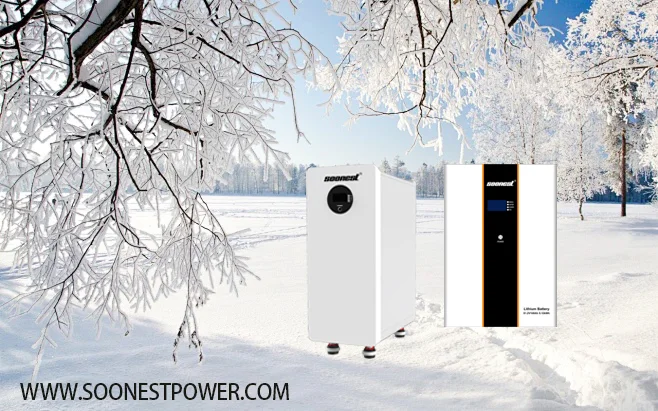
Батареи LiFePO4 не нуждаются в техническом обслуживании. Они созданы для долгосрочного использования. Это делает их отличными для далеких мест или мест, трудно достижимых зимой.
Какие батареи лучше всего подходят для холодной погоды?
Теперь, когда вы знаете, что важно в холодных температурах, давайте проверим общие Солнечная батарея типы. Посмотрим, как они справятся с холодными условиями.
Хорошие ли свинцово-кислотные батареи для суровых зим?
Свинцово-кислотные батареи, такие как AGM и гелевые батареи, использовались в течение многих лет. Дешево, но есть некоторые проблемы:
- Они удерживают меньше энергии, когда они замерзают.
- Они нуждаются в потоке воздуха, потому что выделяют газы.
- Они не так долго, как литиевые батареи.
Тем не менее SOONEST солнечные элементы GEL батарея Использует гелированный электролит. Он производится путем смешивания серной кислоты с кремниевым дымом. Это делает его более надежным и останавливает утечки, поэтому он более жесткий, чем обычные свинцово-кислотные батареи. Но это не так хорошо, как литий в действительно холодную погоду.
Почему литий-ионные батареи отличны в ледяную погоду?
Литий-ионные батареи, особенно LiFePO4, более сильны в суровых условиях:
- Они хранят много энергии в небольшом пространстве.
- Они легкие, поэтому их установить легко.
- Они длится долгое время со многими циклами заряда.
- Они дают стабильную мощность, даже когда почти пусты.
SOONEST Глубокий цикл солнечных батарей LiFePO4 заменить тяжелые свинцово-кислотные батареи на меньшие, более надежные. Они поддерживают стабильность энергии, даже когда она находится ниже уровня замораживания.
Следует ли приобрести систему управления батареями (BMS) для зимних батарей?
Да, конечно. Умный BMS - это не просто приятное дополнение. Это обязательное для батарей в холодную погоду.
Как Smart BMS обеспечивает безопасную зарядку и разрядку?
Умная BMS постоянно проверяет напряжение, ток и температуру батареи. Это гарантирует, что батарея заряжается только тогда, когда она безопасна. Если слишком холодно, BMS прекращает зарядку, чтобы сохранить батарею в безопасности.
BMS в Скорее всегоЛитиевые батареи прекращают перезарядку, перезарядку и перегрев. Это обеспечивает безопасность батареи в течение всего года.
Помогают ли тепловые датчики и нагреватели?
Да, они делают огромную разницу. Особенно это относится к батареям, используемым снаружи или в неогревных местах. Некоторые топ Солнечная батарея Модели имеют функции самонагревания. Они запускаются автоматически, когда становится слишком холодно.
Нагреватели сначала нагревают аккумулятор. Это позволяет заряжаться безопасно, даже в холодную погоду.
Почему ионный литий является лучшим выбором для холодной погоды
Литиевые ионные батареи (LiFePO4) являются лучшим выбором для холодного климата. Их химия и умный дизайн делают их выдающимися.
Что делает ионный литий потрясающим для экстремального холода?
Ионические литиевые батареи упаковывают тонны энергии в небольшой размер. Они легкие, поэтому их легко установить. Они дают больше полезной мощности на килограмм, даже когда снаружи снежно.
Они также поддерживают стабильное выходное напряжение. Это означает, что ваш инвертор работает плавно, независимо от уровня заряда или внешней температуры. Это важно во время длинных зимних ночей, когда солнечный свет недостаточен.
Как работает защита от холодной температуры?
Большинство ионных литиевых батарей имеют передовые функции BMS. Они прекращают заряжаться, когда слишком холодно:
- Они предотвращают литиевое покрытие, которое может повредить батарею.
- Они избегают короткого замыкания внутри батареи.
- Они помогают батарее длиться дольше.
Эта защита обеспечивает безопасность батареи в ледяную погоду. Старые типы батарей часто нуждаются в внешних нагревателях для этого.
Какой продукт является лучшим вариантом нагрева?
Хороший выбор – это Самая скорое 12V 100Ah нагреваемая батарея LiFePO4. Он маленький, но сильный, сделан для солнечных систем вне сети в суровые зимы. Он поставляется с:
- Встроенные нагревательные элементы для холодной погоды.
- Умный BMS с низкотемпературным отключением.
- Более 6000 циклов при 80% министерства обороны.
Вы можете найти эту батарею на Скорее всегоОфициальный сайт в разделе батареи.
Лучшая батарея для холодной погоды: отопленные варианты
Если вам нужна солнечная энергия, вы можете рассчитывать на нее весь год, даже во время снежных бурь. А нагреваемый Солнечная батарея Это путь идти.
Почему встроенные нагреватели так важны зимой?
Когда он достигает уровня ниже замораживания, внутренние нагреватели включаются до начала зарядки. Это позволяет химическим процессам батареи работать правильно, не повреждая клеток.
Отгретые батареи останавливают время простоя от замороженных элементов. Они позволяют вашей системе работать плавно в течение зимы, даже когда облака блокируют солнечный свет и электричество не хватает.
Какие нагреваемые модели дают лучшую производительность и ценность?
Подгреваемые батареи LiFePO4 обеспечивают высокую эффективность и безопасность. У них есть тепловые датчики и автоматическое управление. Ищите модели с:
- Защита от зарядки при низких температурах.
- Автоматическое отопление, которое включается при необходимости.
- Длинный цикл жизни (более 6000 циклов).
Эти функции помогают вашей батарее выжить зимой и длиться годами во все сезоны.
Как настроить нагревые батареи для хорошей холодной погоды?
Правильная настройка батареи столь же важна, как и правильный выбор.
Какие советы по изоляции и корпусу следует следовать?
Поставьте аккумулятор в изолированную коробку или корпус, предназначенный для использования на улице. Держите его в безопасности от ветра или снега, накопляющегося вокруг терминалов или вентиляционных отверстий.
Используйте пеновую оболочку или отражающие материалы внутри корпуса. Эта ловушка тепла производится во время зарядки или разрядки.
Какие изменения проводки останавливают падения напряжения в холодную погоду?
Холодная погода повышает электрическое сопротивление. Используйте более толстые проводы, чем в теплую погоду. Держите все соединения чистыми и свободными от ржавчины. Добавьте диэлектрический жир, чтобы сохранить соединения прочными всю зиму.
Окончательные мысли о выборе нагреваемой солнечной батареи в ближайшее время
Выбор нагреваемого Солнечная батарея Речь идет не только о том, чтобы пройти зиму. Речь идет о том, чтобы ваша система работала хорошо в течение всего года. Он также защищает ваши инвестиции от холодных вспышек или покрытых снегом солнечных панелей. С такими функциями, как встроенные обогреватели и умная защита BMS, Скорее всего Предлагает одну из лучших холодных погод Солнечная батарея Варианты там.
Их батареи созданы для жестких условий. Они поддерживают ваш дом вне сети, RV или телекоммуникационную установку, независимо от того, насколько холодно. Выбирая A Скорее всего аккумулятор с нагревательными элементами и умной BMS, вы выбираете надежность и спокойствие.
Часто задаваемые вопросы
Q1: Могу ли я использовать обычные свинцово-кислотные автомобильные батареи для моей внесетевой солнечной системы зимой?
О: Нет. Автомобильные батареи сделаны для коротких вспышек высокой мощности, а не глубокого велосипеда. Они теряют много мощности в холодную погоду и не надежны для солнечных систем.
Q2: Как узнать, имеет ли моя батарея защиту от низкой температуры?
A: Проверьте детали продукта или руководство пользователя. Большинство современных батарей LiFePO4, таких как Скорее всегоиметь умный BMS, который прекращает зарядку в небезопасных холодных условиях.
Q3: Единственная изоляция будет защищать мою батарею от замерзания?
Ответ: Изоляция улавливает тепло, но не производит тепла. Для реальной производительности в холодную погоду выберите нагреваемую батарею с тепловым регулированием, как Скорее всегонагреваемые модели LiFePO4.

